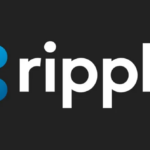Ripple reaches final settlement with SEC, invests in pharmaceutical company, causes trouble for Trump lobbyist

Ripple has been making waves in the news cycle, with a mix of developments in the past 24 hours. The founder of the XRP Ledger, Ripple, saw resolution to a long-standing dispute with the SEC confirmed back in March. The official terms of this settlement were recently announced by the SEC, marking a significant step in moving forward for both parties. However, the varying interpretations of this outcome remain a highlight of the recent news cycle.
The legal battle between Ripple and the SEC emerged from the SEC’s contention that XRP constitutes a security. While a court ruling last year offered points to both camps, it was clear that sales of XRP to institutional investors were seen as the transactions of unregistered securities, leading Ripple to be charged $125 million. On the flip side, sales of XRP to retail investors through exchanges were not deemed securities sales. Despite these distinctions, the final settlement resulted in both parties laying down their arms and a reduced fine of $50 million replacing the earlier sum of $125 million.
In a dramatic turn of events unrelated to the legal settlement, the news broke of a contentious situation involving President Trump, a lobbying firm, and an announcement regarding cryptocurrency assets. Shortly before the Crypto White House Summit, President Trump caused a stir by taking to social media to declare the formation of a Crypto Strategic Reserve, which included XRP, SOL, and ADA but omitted the more familiar choices of bitcoin and ether. The involvement of a lobbying firm in prompting this social media post led to displeasure on the part of President Trump upon learning of Ripple’s association with the firm. Subsequent events led to a revision of the digital assets set to be part of the strategic reserve.
Further grabbing headlines was Ripple’s investment of $50 million in the pharmaceutical logistics company Wellgistics. This investment, slated as an “equity line of credit,” signifies Ripple’s push to integrate XRP payment solutions more extensively in the real world. The move, while seen as innovative by Wellgistics, raises questions about the practicality of using XRP for domestic payments within the US. While blockchain’s role in pharmaceutical distribution is on the rise, and Ripple’s investment in Wellgistics signals confidence in their integration, the adoption of XRP for routine transactions remains to be seen.
Overall, the recent cascade of news surrounding Ripple underscores the growing interest in blockchain, digital assets, and the intersection of finance and technology. Far from a one-off event, these developments offer a glimpse into the evolving landscape of cryptocurrencies, legal battles, and the financial sector’s interactions with new technologies. Ripple’s strategic maneuvering continues to pique interest, as it navigates the complex nuances of regulatory compliance, investments, and future potential in a rapidly changing financial environment.



